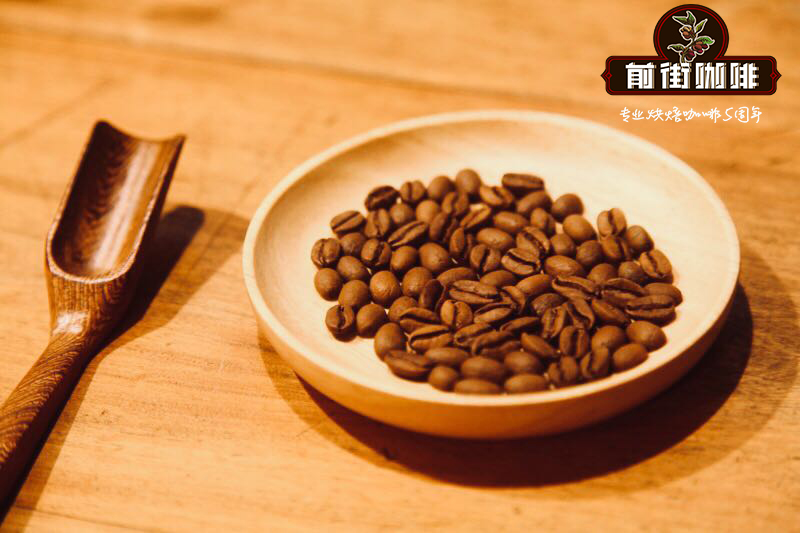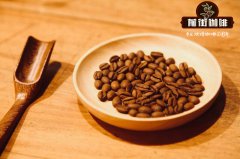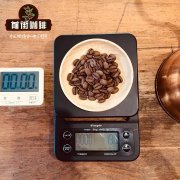Mexican coffee producing area Huatusco Coffee mouth Flavor Mexican Coffee

Professional coffee knowledge exchange More coffee bean information Please pay attention to coffee workshop (Weixin Official Accounts cafe_style)
The main coffee producing country in Central America, coffee taste comfortable, aromatic and charming, the top choice of Mexican coffee are Coatepec (Coatepec), Huatusco (Huatusco), Orizaba (Orizaba), of which Coatepec is considered one of the best coffee in the world. Mexico's coffee-growing zone, both geographical and climatic conditions are similar to those of Guatemala in the south, so it is included in the scope of "China and the United States." It is mainly distributed in Goa, Buick, Oahaka and other states, especially the washed coffee beans produced in the highlands. Its aroma and acidity are excellent. Moreover, the specifications are mainly divided into different grades according to the elevation. The coffee beans are large and sour and strong. It is suitable for medium to deep roasting. Most of them are sold to Europe and America after harvest. Characteristics: all acidic, aromatic smooth mouth, mellow taste, sweet and sour, strong taste. Special fruit aroma.
A brief history of Mexican coffee
Coffee in Mexico dates back to the late 18th century, when a Spaniard introduced it from the West Indies to southern Mexico in 1790. Coffee was then grown and slowly expanded in the Mexican state of Vera Cruz in the early 19th century. Coffee production then spread to Oaxaca and Chiapas in the south, and today there are mainly 12 states producing coffee in Mexico. In the 1996-1997 season, Mexico produced 6652173 quintals of coffee beans equivalent to 5100000 bags (60 kg bags), the fourth largest producer of coffee in the world at the time.
Mexican coffee classification
Estricta Altura (Spanish)/Strictly High Mountain Grown (English): Planted above 4200 feet
Altura/High Mountain Grown: Grown above 3300 feet
Prima Lavado/Prime Washed: Planted above 2700 feet
Coffee producing area
Mexico currently has 12 state-grown coffees: (1) Chiapas (2) Oaxaca (3) Vera Cruz (4) Puebla (5) Guerrero (6) Hidalgo (7) San Luis Potosi (8) Nayarit (9) Jalisco (10) Colima (11) Tabasco (12) Queretaro
Vera Cruz,Oaxaca and Chiapas are among the most important:
Vera Cruz State: The earliest coffee-producing region, producing many low-altitude general beans. Vera Cruz has high-quality coffee such as Orizaba, Huatusco and Coatepe.
Oaxaca State: produces some good quality coffee, the best of which is in Pluma. Pluma district is located on the slopes of the Pacific coast where coffee was introduced in the 1860s.
Chiapas: Located in the southernmost part of Mexico, near the border with Guatemala. The slopes of Sierra Madre facing the Pacific Ocean in the administrative district of Soconusco, Chiapas State, are between 2000 and 4000 feet high and grow high quality mild coffee. The beans of this district are distributed in Tapachula, the capital of Soconusco district. Tapachula is 600 feet above sea level and 24 miles from San Benito, a small harbor in the Pacific Ocean.
Beans from this area are exported from this port.
The following is a description of coffee in Chiapas:
Geography of Chiapas
Area: 73724 km2
Climate: Mostly tropical, humid and semi-humid. Rainfall is highest in the hottest months.
Geography: The mountains in Chiapas are mostly volcanic, with the Chichonal volcano north of Chiapas erupting only recently in 1982. The state is also rich in water resources, with two of Mexico's largest rivers, Grijalva and Usmacinta, flowing through Chiapas from Guatemala. So during the summer rainy season, a lot of rain flows through these rivers and lakes into the lowlands.
Coffee growing area (90% in plateau area, 10% in low area)
Highlands: Motozintla, Tapachula, Jaltenango, Bochil, San Cristobal de las Casas, Pichucalco, Yajalon
Low areas: Copaninala, Comitan, Ocozocoautla, Palenque, Ocosingo
Coffee growing
1. Arabica is the dominant species.
2. Arabica varieties planted in plateau areas: Typica, Maragogype, Boubon, Mundo Novo
The lowlands are Caturra, Catuai, Catimor.
3. The elevation at which coffee is grown in Chiapas can be distinguished as Prime Washed, Extra Prime Washed, High Grown, Strictly High Grown. Coffee is grown at different altitudes.
[Coffee Processing]
Due to sufficient water resources, coffee cherries are picked by washing and then sun-dried in farmers 'yards. In some high-altitude areas, they are still manually picked by indigenous people or transported by animal to treatment plants or affiliated cooperatives for further shelling and grading. For large river basins, they are shipped to dry millers for later treatment.
[Rise of Organic Cultivation]
Chiapas is Mexico's poorest state, coupled with years of tense confrontation between government forces and guerrillas, resulting in unusually difficult life for indigenous people; Traditional coffee production methods (chemical fertilizers, pesticides, etc.) are harmful to the environment and the income is not enough to make a living. Fortunately, Fairtrade and some organic coffee environmental organizations have greatly helped these indigenous production cooperatives to upgrade their concepts and technologies, so that Chiapas 'premium organic beans can be maintained and grown better!
In terms of taste, the plateau organic beans in Chiapas are obviously sweet, thick in body and relatively not sour, which is quite suitable for the taste of Chinese people. This is very different from the beans in famous producing areas such as Antigua in Guatemala and Tara Pearl in Costa Rica. The sour fruit of the latter is obviously more ~
Important Notice :
前街咖啡 FrontStreet Coffee has moved to new addredd:
FrontStreet Coffee Address: 315,Donghua East Road,GuangZhou
Tel:020 38364473
- Prev

Is Nayarit coffee good in the coffee producing area of Mexico? Mexican coffee beans taste good.
Professional coffee knowledge exchange more coffee bean information please follow the coffee workshop (Wechat official account cafe_style) Mexico Mexico honey, walnut, almond, banana, cocoa, nuts, finish and taste light and smooth. Located in North America, with a diverse climate, the 14th largest country in the world and the fourth largest coffee producer, with an annual output of about 5 million bags of coffee
- Next

Hawaiian Coffee Manor introduces what kind of coffee is grown in Maui
More information about coffee beans Please follow the Coffee Workshop (Wechat official account cafe_style) Hawaii has an island climate, where the temperature does not change much throughout the year, but there is a big temperature difference between day and night, and there are enough clouds to block out the sun. Although the average elevation of coffee producing areas is not very high, due to Hawaii's special island climate and fertile volcanic soil
Related
- Does Rose Summer choose Blue, Green or Red? Detailed explanation of Rose Summer Coffee plots and Classification in Panamanian Jade Manor
- What is the difference between the origin, producing area, processing plant, cooperative and manor of coffee beans?
- How fine does the espresso powder fit? how to grind the espresso?
- Sca coffee roasting degree color card coffee roasting degree 8 roasting color values what do you mean?
- The practice of lattes: how to make lattes at home
- Introduction to Indonesian Fine Coffee beans-- Java Coffee producing area of Indonesian Arabica Coffee
- How much will the flavor of light and medium roasted rose summer be expressed? What baking level is rose summer suitable for?
- Introduction to the characteristics of washing, sun-drying or wet-planing coffee commonly used in Mantenin, Indonesia
- Price characteristics of Arabica Coffee Bean Starbucks introduction to Manning Coffee Bean Taste producing area Variety Manor
- What is the authentic Yega flavor? What are the flavor characteristics of the really excellent Yejasuffi coffee beans?

